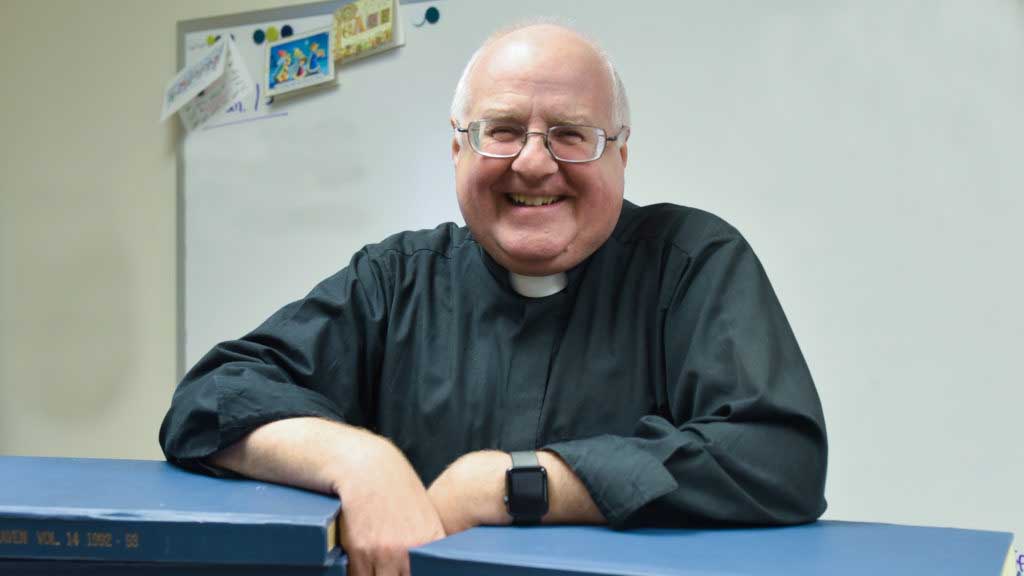
by Father Mark Goldasich
I thought it was a recent fad.
I’m talking about upside-down Christmas trees. I first read about them in the early 2000s when a catalog offered a seven-foot version for just under $600, complete with 800 lights. Its inverted shape, according to the retailer, “makes it easier to see ornaments, which hang away from the dense needles.” (This doesn’t seem like a good idea for anyone who has cats in the house.)
Its real selling point, though, seemed to be that it allowed “more room for the accumulation of gifts underneath.”
Instead of rolling my eyes, I did a deeper search and found that the origin of the upside-down tree is probably centuries old. One legend — likely apocryphal — has it that St. Boniface, a Benedictine monk in the 8th century, came across some pagans in Germany worshiping a giant oak tree. The saint subsequently cut down the tree and a fir grew in its place. Boniface then used the shape of the fir to teach about the Trinity.
Christians later inverted the fir, causing its shape to look like the Crucifixion. This custom apparently lasted for centuries, especially in Central and Eastern European countries. Who knew?
In any event, you can still get an upside-down Christmas tree from various sellers, including Wayfair, with options ranging from an unadorned one for $61.99 to one with PVC pine needles and artificial red berries (minus gifts, of course) for $499.99. But I digress.
I mention this because we’re about to enter one of the most difficult seasons in the church year to celebrate: Advent. Granted, it doesn’t begin until Nov. 28 this year, but entering into its spirit takes careful planning. In a nutshell, the church asks us to turn upside-down all the activities and boisterous noise we’re already surrounded by in this holiday season.
Ideally, the days before Christmas should be filled with quiet, prayerful reflection. The playing of Christmas music should be delayed until Christmas itself and the decorations put up right before Dec. 25. Advent should be a time of joyful anticipation.
Honestly, I’m not a good Advent-er. For example, my Christmas tree is already up. Well, to be perfectly frank, I never took it down from last year. Since it’s a “mini tree” that sits on top of a bookcase, I just left it out . . . along with the decorative Christmas blanket underneath and some Christmas baubles.
My Christmas lights are still up as well. I’ve already started to write a few Christmas cards to the accompaniment of, yes, Christmas music. And I have tickets to three pre-Christmas Christmas performances in Kansas City.
At church, we’re more liturgically proper as far as Advent music and environment, but I’ve stopped feeling guilty about being an Advent failure at home. Instead of being a “purist” in this season, I set my own Advent-like agenda. This year, these will include:
• abstaining from meat on the Fridays of Advent to remind myself of the poor and hungry in the world
• not passing up a Salvation Army bell ringer without putting something into the kettle
• making a financial donation to a charity each week of Advent
• lighting my Advent wreath each evening and praying for peace
• making time daily to do something fun to soothe mind and soul
• calling, rather than Christmas-carding, faraway friends
So, what can you do to turn upside-down some of your “normal” holiday routines in order to create time for Advent? Plan now because it will be here — and gone — before you know it.
You may find that turning things upside-down in December will set your heart and mind right-side up for Christmas.

